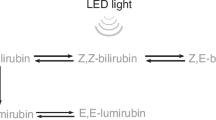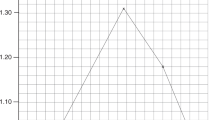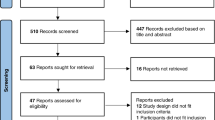Abstract
Extract: In vitro studies were undertaken to measure the effects of varying concentrations of albumin and flux on the photodecomposition of bilirubin.
By using an experimental model, the effect of albumin on photodegradation of bilirubin was determined. Synthetic crystalline bilirubin solutions (20 mg/100 ml, pH 7.4) were exposed to the same flux levels for periods of 4.5 hr. The only variable in this series was the concentration of albumin, ranging from 0.5 to 5 g/100 ml. As the the concentration of albumin increased, the reaction rate decreased (Fig. 5).
The efficiency of phototherapy was studied by varying flux levels while maintaining other variables constant. Figure 6 shows a nonlinear relation between reaction rate and flux, in which higher flux levels resulted in less decomposition per amount of flux (i.e., efficiency). More than twice the flux level was required to attain a twofold increase in decomposition rate. The effect of light flux was such that continuous use of the lowest practical level is to be recommended.
Data are given on the comparison of the relative effectiveness of cool white, high intensity blue, and two experimental lamps. The four lamps were tested at conditions of constant distance and constant flux. The high intensity blue lamp was twice as effective as the cool white. The two experimental lamps showed a 17% increase over the blue lamp (Figs. 2 and 3).
The effect of time on the spectral output of the fluorescent lamps in an experimental model was determined by using a spectral radiometer. The energy dropoff within the 420− to 480-nm region at 200 hr was approximately 20% for blue lamps and averaged 7.5% for the experimental lamps.
Speculation: As with any new drug used on the neonate, the effects of phototherapy must be categorized, and the procedure must be standardized. Further investigations are needed to determine exact in vivo decomposition products, optimal timing of exposure, differences in skin attenuation, toxicity reactions, site of action, and photobiologic and photochemical alterations and interreactions.
Similar content being viewed by others
Log in or create a free account to read this content
Gain free access to this article, as well as selected content from this journal and more on nature.com
or
Author information
Authors and Affiliations
Rights and permissions
About this article
Cite this article
Ente, G., Lanning, E., Cukor, P. et al. Chemical Variables and New Lamps in Phototherapy. Pediatr Res 6, 246–251 (1972). https://doi.org/10.1203/00006450-197204000-00006
Issue date:
DOI: https://doi.org/10.1203/00006450-197204000-00006
Keywords
This article is cited by
-
A Dose-Response Model for the Conventional Phototherapy of the Newborn
Journal of Clinical Monitoring and Computing (2006)



